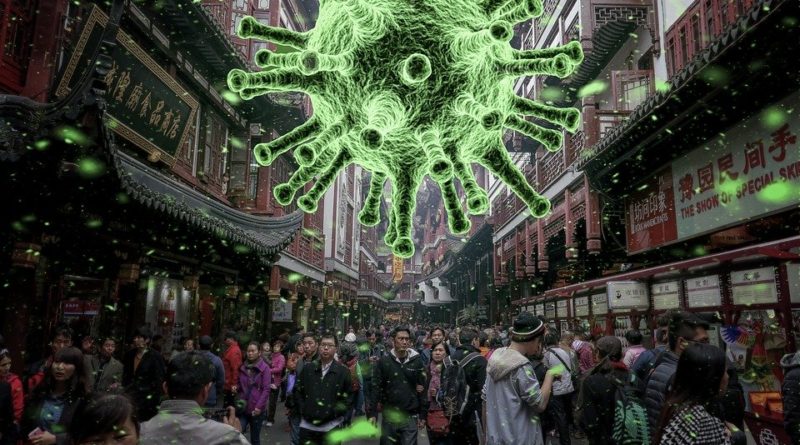History Repeats Itself In China
Coronavirus are groups of common viruses that look like crown spikes under a microscope and are therefore named ‘corona’ which means ‘crown’. Most of these viruses circulate among animals, and some like these newer strains can be transmitted between animals and humans. They can cause illness ranging from symptoms of the common cold to pneumonia and worse. The severe strains are MERS-CoV (Middle East respirator syndrome), and SARS-CoV.
In 1997, on my first trip to Hong Kong, I was “welcomed” with the news of the H5N1 virus or the “bird flu”. In spite of the reality that 80% of the poultry came from mainland China, the official government announcement was denial and the refusal to accept responsibility. The same disclaimer occurred in 2002 and 2003 with the outbreak of another severe acute respiratory syndrome; “SARS”. In 2006, there was the avian flu, in 2009 the swine flu.
Welcome to 2020 and the latest version of the “coronavirus” virus. Though not all these viruses originate in China, this newest strain again originated in mainland China. This time there was no denial and China built new hospitals to contain the spread while treating the infected.
For the third time in recent memory a new respiratory illness has jumped from birds and mammals to humans. This new pathogen which began in the city of Wuhan, most likely originated in the outdoor market that sold live animals,specifically wildlife. It is named the 2019 Novel Coronavirus (2019-nCoV), and it’s earliest victims frequented the large seafood and animal markets, which suggests animal to human transfer.
My Visit to a Wet Market
While I visited Hong Kong, the tourists guidebooks highly recommended the “wet market” for an authentic local experience. I clearly remember my visit that filled my senses with the sounds, smells and sights of exotic animals. This vast market was the beating pulse of food culture in Hong Kong. Hence the problem, this zoological urban park is in reality a natural food source which ironically sounds healthy. Stalls filled with live fish of all shapes and sizes, eels and snakes, and a menagerie of soft shelled turtles, frogs and crustaceans. Sounds like a trip to an outdoor nature center, when in reality it’s large outdoor abattoir.

This is the freshest fish and meat source for the restaurant trade. The concern is that the close proximity of live and butchered animals and crowds of humans can be the source of the problem. The live chickens, ducks and pigeons that I saw on my visit have since been deregulated and can’t be sold legally since the bird flu. The hundreds of other creatures specifically mammals from bats to civet cats continue to be sold. This daily mingling of humans with live animals, is blamed for the outbreak and spread of this disease.
On my visit to Beijing, China as I visited the large parks and city squares, I was cognizant of the absence of the usual pigeons and stray cats. I was informed that the locals eat anything with 4 legs except tables and anything with 2 legs except humans.
Who Was That Masked Man
I joined many of the locals and donned a disposable face mask. The N-95 mask is considered the type of mask that should be used and is available on Amazon. The masks are good for various reasons and they also prevent the wearer from touching his or her mouth, eyes or nose with unwashed hands.
The best advice is to wash your hands often with soap and avoiding touching any part of your face.
As you travel you will no doubt see more and more passengers wearing masks. Even the cabin crew and airport workers have been seen wearing masks. It’s advisable to carry disposable masks in your carry on and to don the mask if your seat mate is coughing or sniffling.

The Discovery Elementary School in Idaho Falls, recently posted the results of their science project. Seventeen students put single slices of white bread into plastic bags. One control group was bread touched with hands washed with soap and water, and another was bread touched with dirty hands, another with hands cleaned with hand sanitizer and the last bread slices were wiped on the keyboard of a laptop computer. After 3-4 weeks after the preservatives wore out they checked the bread. The untouched bread grew no mold, the one touched with washed hands had almost no mold. The slices touched by unwashed hands and hand sanitizers were covered in yellow and black mold. The worst one was the one rubbed on the Chromebook, it was absolutely covered in black mold. When I travel my motto is; “whenever you see a sink, use it”.
Grants
It was good to hear that “The Coalition for Epidemic Preparedness Innovations” (CEPI) has awarded a $9 million grant to Inovio Pharmaceuticals towards the development of a vaccine against this new virus strain. Inovio is a Pennsylvania based company that has previously worked on the MERS vaccine and the ZIKA outbreak.
The European Commission has set aside 10 million euros in emergency grants for research and innovations to understand this new virus strain.
The Bill & Melinda Gates Foundation has announced a $10 million to help China and Africa contain the spread of 2019-nCoV.
The moral of the story is that in the overall grand scheme of things, there is a lot that can be done to suppress viruses like this. However, there is always going to be a new strain that pops up, and this makes research into the viruses so important and necessary to be ready for future occurrences.
About the Author: Jake Tewel holds a Masters Degree from YU. He has been a wine seller, caterer and a million miler for the past 15 years. Jake is a best friend, great neighbor, your go to travel person, father, grandfather and loving husband. He is now focusing his efforts on heart healthy nutrition, exercise and travel.

